June 29, 2017
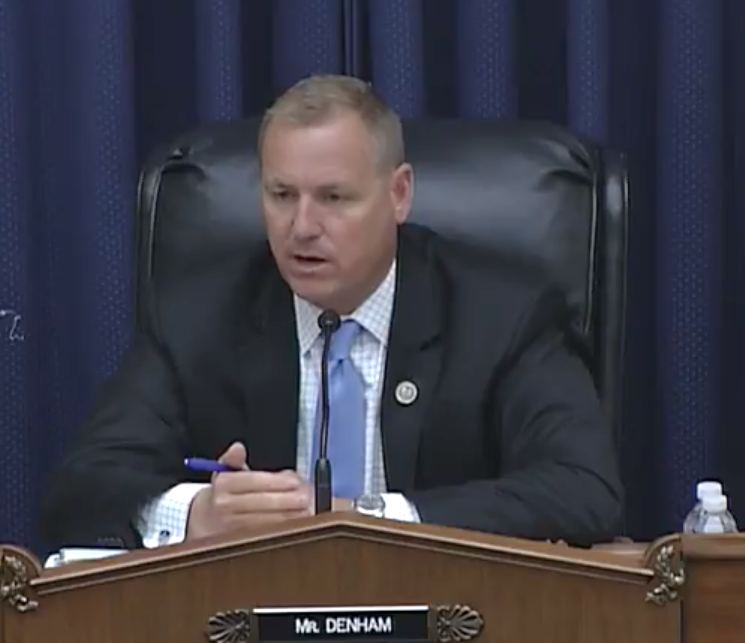 On June 22, the Subcommittee on Railroads, Pipelines, and Hazardous Materials of the House Transportation and Infrastructure Committee (T&I) held a hearing to review the state of intercity passenger rail in the U.S.
On June 22, the Subcommittee on Railroads, Pipelines, and Hazardous Materials of the House Transportation and Infrastructure Committee (T&I) held a hearing to review the state of intercity passenger rail in the U.S.
The hearing, titled “Building a 21st Century Infrastructure for America: Challenges and Opportunities for Intercity Passenger Rail Service,” was a continuation of T&I’s #Building21 campaign – an effort to bring attention to 21st century methods and technologies to improve transportation networks.
The hearing included testimony from the Federal Railroad Administration (FRA), the former interim executive director of the Gateway Program Development Corporation, Amtrak, and representatives from two high-speed rail projects:
- Paul Nissenbaum, Associate Administrator for Railroad Policy and Development, Federal Railroad Administration (testimony)
- Charles W. “Wick” Moorman IV, President and Chief Executive Officer, Amtrak (testimony)
- John Porcari, Interim Executive Director, Gateway Program Development Corporation (testimony)
- Mike Reininger, Executive Director, Florida East Coast Industries (testimony)
- Dan Richard, Chair, California High-Speed Rail Authority (testimony)
The subcommittee’s chairman, Rep. Jeff Denham (R-CA) opened on a positive note by praising the subcommittee and its ranking member, Rep. Mike Capuano (D-MA), for its bipartisan work on the FAST Act. He also touted the successes of the Passenger Rail Investment and Improvement Act of 2008 (PRIIA, P.L. 110-432).
“As a result of these changes, this year Amtrak will receive $286.6 million from 18 states and approximately $119 million from commuter authorities,” he said. However, Denham’s positive portrayal of the state of passenger rail did not last.
“But in one respect, our approach to intercity passenger rail service has been scattershot,” Denham continued. “Given the limited federal dollars available for intercity passenger rail projects, it is imperative that projects be better prioritized to accomplish specific national goals.”
“As always, we are always learning from the things we do right – and the things we do wrong,” said Ranking Member Michael Capuano (D-MA).
“Unfortunately, thus far we’re making no progress,” said Rep. Peter DeFazio (D-OR), the top Democrat on T&I. Pointing to President Trump’s federal budget and infrastructure plan, DeFazio argued that the Administration is “taking us backwards” and the President’s infrastructure week focused on “devolution” and “privatization.”
“We’ve got a lot of pretend going on: ‘all we’ve gotta do is streamline,’” DeFazio said. He argued that many of the streamlining provisions passed in the last two surface transportation acts have not yet been implemented. He quipped that once those streamlining measures are implemented, the nonexistent regulatory issues will be “even more nonexistent.”
DeFazio proceeded to criticize cuts to the president’s budget, including all 15 long-distance passenger rail routes and essential air service for rural airports (ETW covered the impacts of these in a recent article).
Amtrak
Wick Moorman’s opening statement highlighted Amtrak’s recent successes, including a record 31.3 million passengers served last year. In the past year, he said, a structural reorganization at Amtrak resulted in a simplified chain-of-command that is “bottom-line driven.”
“We clearly see the demand for new routes and increased service levels,” said Moorman. He cited a 90% growth in state-supported routes across the past 18 years. Amtrak receives funding from 18 states to operate these 24 state-supported routes along corridors of less than 750 miles.
These routes carried 14.7 million passengers – which is about half of Amtrak’s ridership – last year. PRIIA required Amtrak to implement a new methodology for allocating operating and capital costs for these routes, which has reduced operating losses to $149 million in FY16.
But at the same time, the Trump Administration’s FY18 budget request called for dramatic cuts to federal grants to Amtrak and the elimination of federal support for Amtrak’s long-distance routes.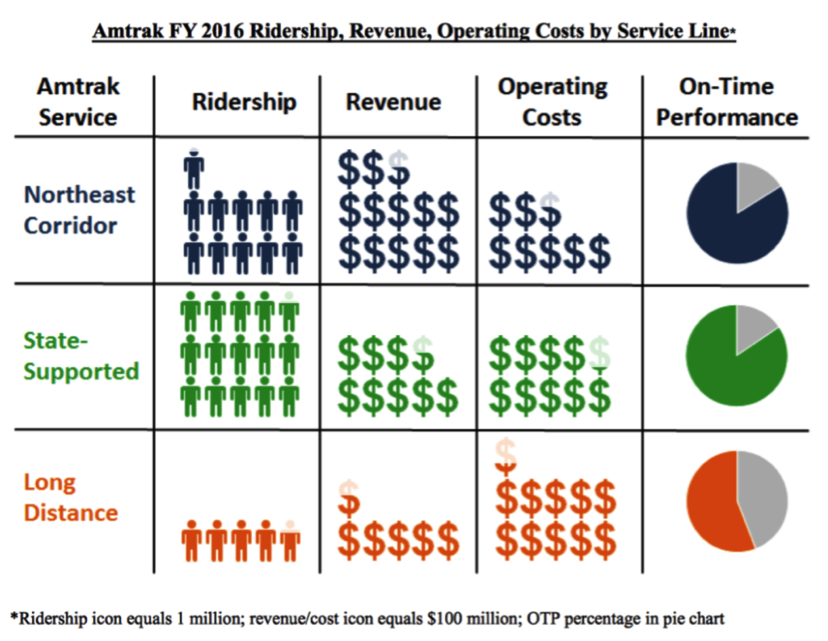
As ETW previously reported, this would amount to a $630 million reduction from the Amtrak National Network appropriation under the FY17 CR – which is a $735 million reduction when compared to the actual 2017 appropriation. Ultimately, this would devolve Amtrak from a national passenger rail network into a fragmented set of state-supported routes in the East Coast, Midwest, and Pacific.
Responding to a question from DeFazio, Moorman said that the “true impact [would be] more severe” than losing national rail connectivity. The $500 million in fares generated from the long-distance network cover fuel, crew costs, and the base operation of the network – but its main losses come from the Amtrak reservation system and law enforcement costs.
Moreover, Amtrak would continue to incur $300-400 million in labor costs if long-distance routes were eliminated. This is because Amtrak’s basic labor agreement provides a year of salary protection for each previous year of employment at Amtrak for up to four years.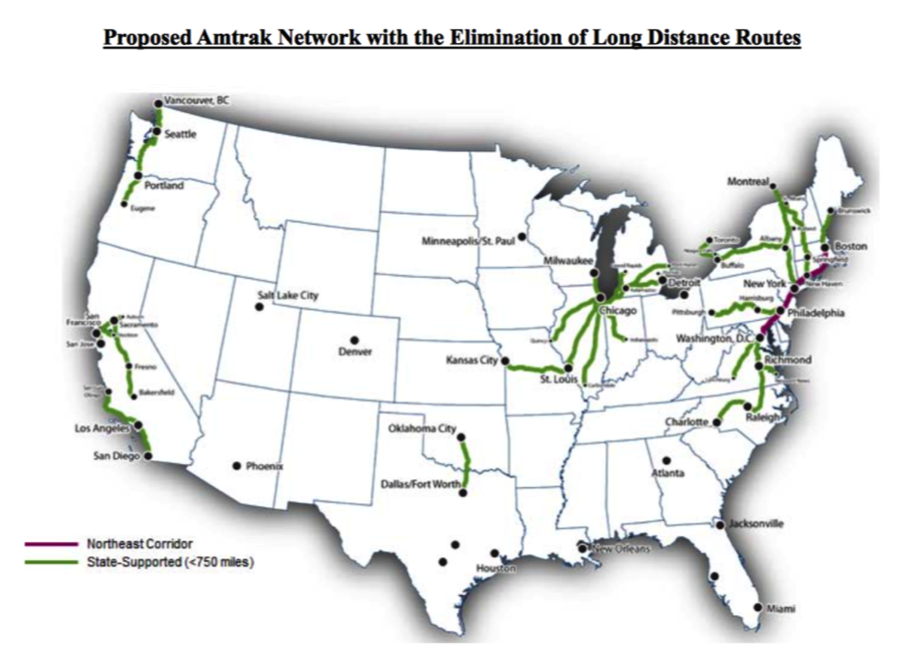
Rep. Jason Lewis (R-MN) pressed Nissenbaum on the timeline for a final rule that would allow private entities to bid for the right to operate up to 3 of Amtrak’s long-distance routes. In accordance with Sec. 11307 of the FAST Act, FRA initiated the rulemaking process with a Noticed of Proposed Rulemaking (NPRM) in June 2016.
“I can’t say for sure,” Nissenbaum said, before indicating that it would be out very soon. “It’s in the final review process.”
(Ed. Note: At no point during the hearing did Moorman give anyone a clue that the following day, Amtrak would announce his replacement as President and CEO, former Delta Air Lines CEO Richard Anderson.)
(Further Ed. Note: Even if Richard Anderson single-handedly saves Amtrak, he will still at best be the third-coolest man with that name, following the actors who portrayed Oscar Goldman and MacGyver.)
(Even Further Ed. Note: Come to think of it, Amtrak needs someone in charge who is part MacGyver (can solve any technological problem quickly with off-the-shelf components that are randomly at hand) and part Oscar Goldman (bottomless financial resources to throw at problems where groundbreaking new technology is needed, like creating a Six Million Dollar Man or Bionic Woman.)
Gateway Program Development Corporation
The Gateway Program is a collection of individual projects designed to address deficiencies in the passenger rail system that stretches from the Hudson River to New Jersey, before proceeding down to Washington. (See related article in this issue, “What is the Gateway Program“?)
This corridor is particularly strained dueto a lack of redundancies and aging infrastructure. The rail tunnel that passes over the Hudson River and the Portal Bridge (which is the busiest train bridge in the Western Hemisphere) were both built in 1910 and only have two rail tracks.
These are critical chokepoints for the Northeast Corridor, as the shutdown of one track would double the traffic on the other. Porcari attested that closing one track under the Hudson River tunnel without adding new capacity would reduce throughput of trains during rush hour by 75 percent.
This is compounded by the fact that the Portal Bridge requires constant maintenance – and is a drawbridge that must halt traffic in order for ships to pass underneath.
DeFazio shared Rep. Donald Payne’s (D-NJ) story about a recent visit to the bridge, where an engineer had to use a sledgehammer to hammer the rails into alignment after the bridge was raised for a boat to pass.
“The good news is that it functions very well for a 106 year-old bridge,” Porcari told DeFazio. “The bad news is that it’s still 106 years old.”
To address both of these issues, the Gateway Program seeks to build a new tunnel under the Hudson and a new Portal Bridge that will be high enough for ships to pass underneath.
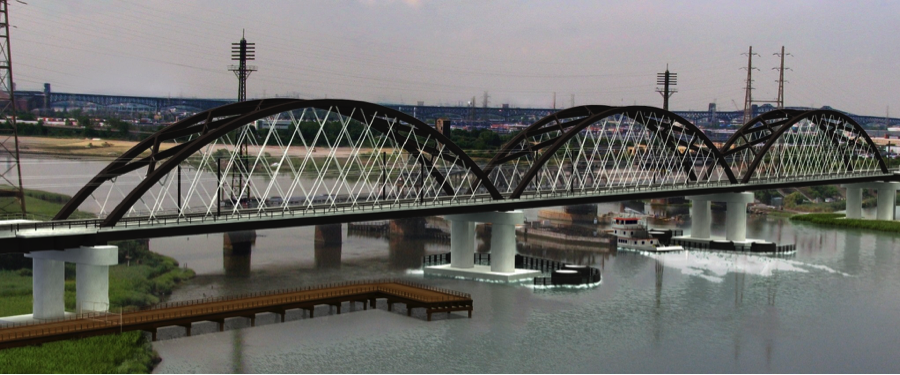 (Source: Gateway Program Development Corporation)
(Source: Gateway Program Development Corporation)
Once both projects are finished, there will be a fully functioning four-track railroad from Penn Station to Newark, with enough track and platform capacity in Penn Station (after its own update is completed) for decades of future growth.
The design and environmental reviews for the bridge are complete, and the project has already received funding commitments from Amtrak and its local partners, New Jersey Transit and the Port Authority of New York and New Jersey.
The final piece of the puzzle is whether USDOT will award a Federal Transit Administration Capital Investment Grant (CIG), which Gateway applied for last year. However, this was thrown into question when the Administration signaled that it does not intend to make any new CIG grants – just continue funding grants that already been issued.
“To be clear, Mr. Nadler, for both the Portal Bridge and the tunnel, those projects cannot go forward without a federal commitment,” said Porcari.
“So the president’s budget would foreclose these projects?” Rep. Jerry Nadler (D-NY) asked.
“Yes, it would.”
Porcari explained that the Gateway Program is finding ways to speed up the review process for the Hudson tunnels without compromising environmental protections, and expects to meet its “aggressive” 24-month schedule for completing the environmental impact statement (EIS).
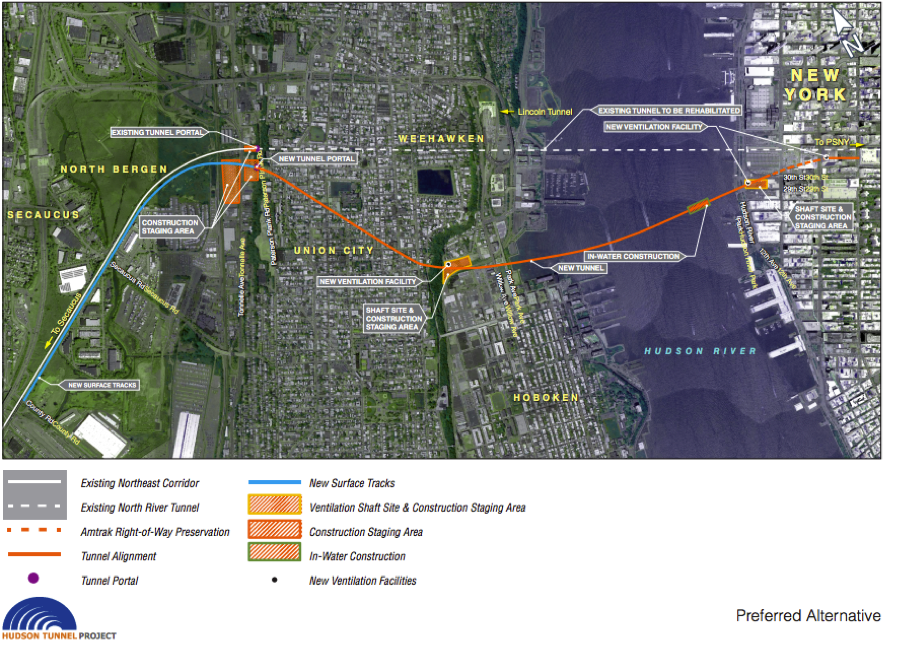 He expressed optimism for the prospects of meeting this timeline, stating that when he was at USDOT, “we put great effort into finding ways to speed up the review process without compromising environmental protections.” He said that they plan to have a draft EIS this month and then a Final EIS, a Record of Decision, and a Corps of Engineers Section 404 permit by March 2018.
He expressed optimism for the prospects of meeting this timeline, stating that when he was at USDOT, “we put great effort into finding ways to speed up the review process without compromising environmental protections.” He said that they plan to have a draft EIS this month and then a Final EIS, a Record of Decision, and a Corps of Engineers Section 404 permit by March 2018.
While the partners involved have made significant progress, Porcari reinforced that the project cannot be completed without decisive federal assistance. “The federal government has always done its part to build the infrastructure that builds America – from the National Road to the Hoover Dam to the Interstate Highway System – and this is what is needed for Gateway,” he said.
(July 3 addendum: late in the day on Friday, June 30, the U.S. Department of Transportation permanently withdrew from the Gateway Program Development Corporation Board of Trustees.)
Private Passenger Rail in Florida
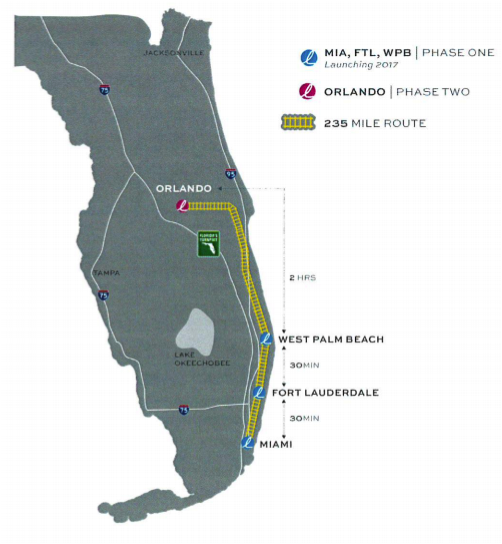 Florida East Coast Industries (FECI), represented by its executive director Mike Reininger at the hearing, provided a private sector perspective into passenger rail operations in the U.S.
Florida East Coast Industries (FECI), represented by its executive director Mike Reininger at the hearing, provided a private sector perspective into passenger rail operations in the U.S.
FECI has a particularly interesting history – it is the parent company of All Aboard Florida, which was created in the interest of expanding passenger rail through a private, for-profit model. Reininger stated that the company, which operates on the original railroad constructed by Henry Flagler’s company 120 years ago, “remains a profitable private enterprise.”
Passenger service on this rail line stopped in the late 1960s, as with many passenger rail routes, but the freight operations continued. But FECI’s rail operations were split in 2007 after it was acquired – one became a freight operation under the banner of the Florida East Coast Railway (FECR), and FECI is a joint passenger and real estate operation. (Asst. Ed. Note: For an example of how other nations run private railways that are paired with other businesses, see our interview with Masaki Ogata of JR East.)
All Aboard Florida has invested $2 billion of private capital into its network in the last 5 years. The ambition is to carry customers on routes that are “too long to drive and too short to fly.
The company will use “100% Buy America trains” to move passengers between three new stations across 70 miles of modern railroad infrastructure that also integrates Positive Train Control (PTC) technology. The value of their business model, said Reininger, is that pairing rail service with real estate development provides “more than one way to pay the bills.”
Reininger attested that two of the most significant impediments to their efforts were complicated review processes and debt market restrictions.
“If I were to isolate one thing, I would say it’s a private sector-like emphasis on the value of time,” he told Rep. Daniel Webster (R-FL).
“The NEPA process remains a disincentive to the private sector,” he said, describing his four-year effort to obtain complete permitting approval under NEPA, even after a Final EIS was published in August 2015.
“The challenge we are experiencing is some 22 months after the FEIS went ‘final’, the process has not yet produced the definitive actions to allow complete permitting under NEPA.”
The other challenge, he said, is the limited financial incentive to invest in new infrastructure. Reininger argued that the federal government has the “opportunity to activate the direction of private capital” for new infrastructure by utilizing TIFIA, Tax-Exempt Bonds, and the RRIF program more efficiently.
California High Speed Rail
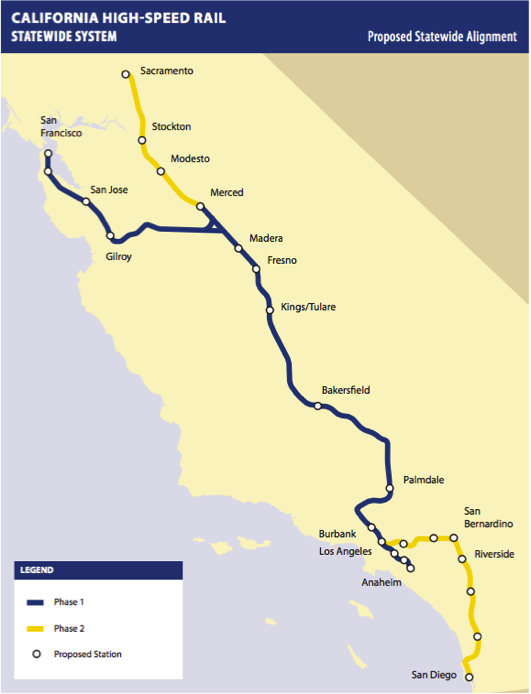 If anyone was in the hot seat during this hearing, it was Dan Richard, Chair of the California High Speed Rail Authority. Chairman Denham, a vocal critic of the high-speed rail project, represents a conservative district in the Central Valley that the rail line will pass through.
If anyone was in the hot seat during this hearing, it was Dan Richard, Chair of the California High Speed Rail Authority. Chairman Denham, a vocal critic of the high-speed rail project, represents a conservative district in the Central Valley that the rail line will pass through.
“As we sit here today, construction of the nation’s first true high-speed rail is under construction in California,” Richard said in his testimony. He took great care to emphasize the benefits of the project for residents of the Central Valley, pointing to the 25.2 percent poverty rate in Fresno (where the initial segment is currently under construction).
Helping to connect the Central Valley with Silicon Valley – cites the importance for improving access to affordable housing in one of the nation’s most expensive housing markets. Connecting San Jose to Merced and Fresno with 40-50 minute trips.
Denham dug into Richard from the onset, lamenting the project’s rising costs. He said that California’s high-speed rail network was “sold to the voters as a $33 billion project” to connect all of California’s major cities by 2020 – but that it is now slated to be finished in 2029 with a price tag of $64 billion.
Project sponsors originally hoped the project would be funded in equal parts by the federal government, the state of California, and private entities. Denham expressed concern that the project’s ballooning costs will result in a need for additional federal funding if California and the private sector are unable to assist further.
“I don’t think there’s any question about the state’s share of this reaching roughly a third… I think the question is the federal investment,” said Richard, noting that the federal government has not contributed any money to the projects since the $3.5 billion in FY 2009 and 2010 funding allocated to the project.
Richard stated they would not need additional federal dollars under initial construction segment – a point that he had made in previous hearings that was “still correct.” However, he said that Phase 1 of the project still needs $20 billion of federal funding.
“The proper phrase here is that ‘we’re hoping’ – I won’t say that we’re counting on it as we sit here today,” he said.
But even if the federal government does not fund the project, Richard explained that the Authority is looking at opportunities to create additional funding streams. Similar to the FECI model, it may turn to real estate operations – or even leasing its right-of-way for broadband.
Denham quipped that the plan sounded like asset recycling, turning to the Democrats on the panel.
“Mr. Chairman, I was taught not to step into a bar fight – I’d rather not,” Richard laughed.
Payne later expressed concern that the price of the project would still continue to balloon.
“As we’ve gotten into construction, we have tight standards… we are not seeing that kind of cost growth,” said Richard. However, he conceded that the initial planning of the project did not take “social costs” of construction into account (e.g. expenses associated with protecting agriculture, legal fees, and environmental considerations).
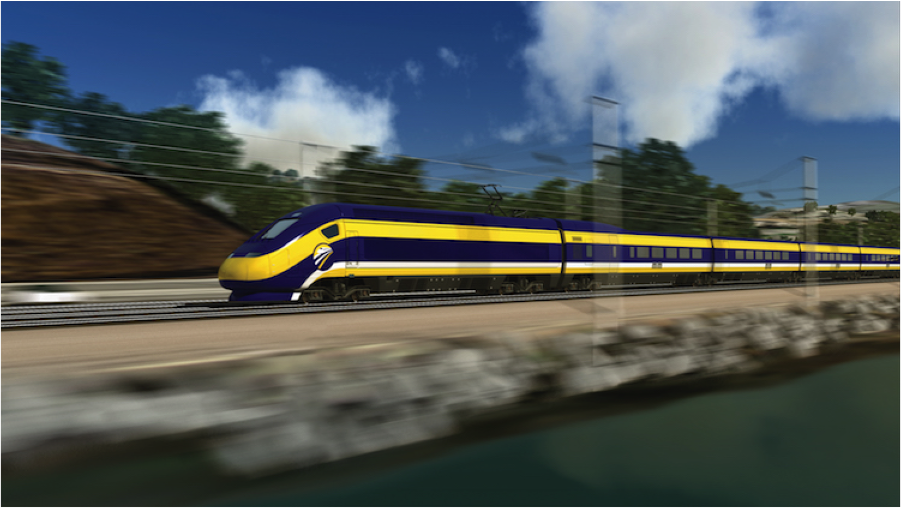
But Richard did bring a peace offering to the panel: he told the subcommittee that every ounce of steel and concrete used is being produced in America, and vowed to use all-American products and labor to the maximum extent possible.
Rep. John Garamendi (D-CA) commented that there are no American businesses that are immersed in creating train sets for high-speed rail. But Richard expressed optimism, indicating that Siemens and Kawasaki both expressed interest in building train sets in the U.S.
“We will not seek waivers from those provisions unless we get to the most extraordinary circumstance, that we have plumbed the depths throughout our economy to make those components here,” he told Garamendi.
Of course, the Denham vs. High-Speed Rail saga is far from over. The next episode will be when Denham conducts a site visit on the request of Richards and Rep. Jim Costa (D-CA), a Democrat who also represents the Central Valley.

 On June 22, the Subcommittee on Railroads, Pipelines, and Hazardous Materials of the House Transportation and Infrastructure Committee (T&I) held a hearing to review the state of intercity passenger rail in the U.S.
On June 22, the Subcommittee on Railroads, Pipelines, and Hazardous Materials of the House Transportation and Infrastructure Committee (T&I) held a hearing to review the state of intercity passenger rail in the U.S.

 (Source:
(Source:  He expressed optimism for the prospects of meeting this timeline, stating that when he was at USDOT, “we put great effort into finding ways to speed up the review process without compromising environmental protections.” He said that they plan to have a draft EIS this month and then a Final EIS, a Record of Decision, and a Corps of Engineers Section 404 permit by March 2018.
He expressed optimism for the prospects of meeting this timeline, stating that when he was at USDOT, “we put great effort into finding ways to speed up the review process without compromising environmental protections.” He said that they plan to have a draft EIS this month and then a Final EIS, a Record of Decision, and a Corps of Engineers Section 404 permit by March 2018. Florida East Coast Industries (FECI), represented by its executive director Mike Reininger at the hearing, provided a private sector perspective into passenger rail operations in the U.S.
Florida East Coast Industries (FECI), represented by its executive director Mike Reininger at the hearing, provided a private sector perspective into passenger rail operations in the U.S. If anyone was in the hot seat during this hearing, it was Dan Richard, Chair of the California High Speed Rail Authority. Chairman Denham, a vocal critic of the high-speed rail project, represents a conservative district in the Central Valley that the rail line will pass through.
If anyone was in the hot seat during this hearing, it was Dan Richard, Chair of the California High Speed Rail Authority. Chairman Denham, a vocal critic of the high-speed rail project, represents a conservative district in the Central Valley that the rail line will pass through.


